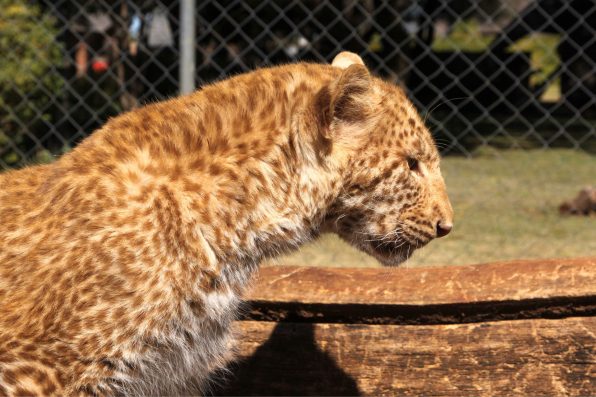An Extremely Rare Strawberry Leopard Was Seen For The First Time In The Tanzanian Game Reserve

An extremely rare leopard with reddish brown spots was observed in southeastern Tanzania for the first time. Along the roadways in the Selous Game Reserve and Nyerere National Park, researchers set up motion-activated cameras in the hopes of capturing wildlife activity throughout the protected area.
Leopards are common and native to the area. A total of 373 cats were identified over the course of the study. Most of them were adult leopards, and there were 12 cubs with their mothers. One of the cats was different from the rest—a female strawberry leopard.
Compared to a typical leopard, the female had much lighter spots. When the researchers took a closer look at the images from the cameras, they noticed a lack of black coloration around her mouth, paws, and behind the ears.
The animal was seen five times in multiple locations at the park during a period of four months. The researchers did not approach or trap the leopard to conduct a DNA test, which would be necessary in order to confirm that the female was a true strawberry leopard.
In leopards, it has long been believed that a genetic mutation can cause their trademark black spots to have more of a brown, red, pink, or golden hue. They are called strawberry leopards, and they’ve only been seen a handful of times in the wild.
The lighter spots may actually help the leopard blend into its surroundings better. Previously, the cause of the strawberry pattern was thought to be associated with erythrism, the excessive production of red pigment.
But now, researchers have found that the phenotype may be linked to albinism instead. Albinism is a genetic condition that leads to the emergence of very light physical characteristics due to low levels of melanin in the body.
It is the first time that a strawberry leopard has been documented on the African continent outside of South Africa. Additionally, the sighting was located about 1,200 miles away from the last existing record.
The vast distance between the single strawberry female and other known animals of a similar physical makeup raised questions on how the genetic mutation was passed on to leopards in Tanzania.

Snap2Art – stock.adobe.com – illustrative purposes only, not the actual leopard
One possibility is that the genetic mutation arose on its own as the result of inbreeding among the leopard population.
In South Africa, many male leopards were killed due to trophy hunting, causing young males to stay closer to their families. This could increase the chances of inbreeding and lead to higher numbers of strawberry leopards.
Another possibility is that strawberry leopards in northern Africa spread the phenotype into the Tanzanian population. However, the significant distance between the two populations makes it unlikely.
The study was published in the journal Ecology and Evolution.
Sign up for Chip Chick’s newsletter and get stories like this delivered to your inbox.
More About:Animals